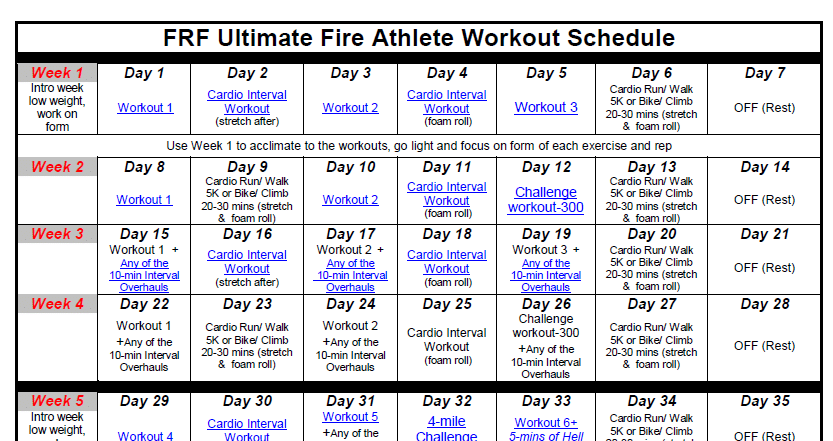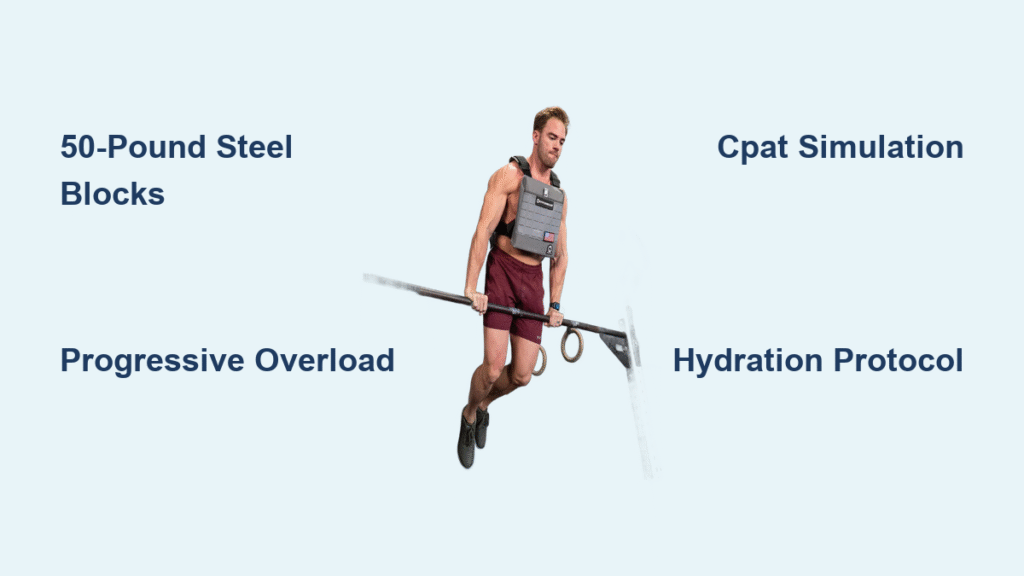Your turnout gear weighs 50 pounds before you even lift a hose—this brutal reality defines fireground performance. Weighted vest training bridges the critical gap between gym fitness and real-world rescue operations, letting you build fire-specific strength without destroying expensive PPE. Every stair climb with added weight prepares your body for victim carries in smoke-filled buildings, while each hose drag replicates the exact resistance you’ll face advancing lines into burning structures. This guide delivers battle-tested protocols used by fire departments nationwide to transform physical readiness, with methods proven to boost CPAT pass rates by 40% and reduce line-of-duty injuries.
Stop wasting energy on generic workouts. Your weighted vest isn’t gym equipment—it’s a life-saving simulator that replicates the exact 50-pound load of standard firefighter PPE. By training under fire-specific conditions, you’ll develop the muscular endurance to carry 165-pound victims down 10-story stairwells and the cardiovascular resilience to maintain 60 steps per minute during high-rise deployments. What follows is the complete system for turning your vest into the most valuable tool in your fitness arsenal, with progression strategies that mirror actual fireground demands from day one.
Firefighter Vest Selection: Steel Blocks or Fail

Choosing the wrong vest sabotages your training before you even start. Fire service demands require specific engineering that generic fitness vests can’t deliver—your life literally depends on this gear staying secure during critical operations.
50-Pound Steel Block Requirement
Forget sand-filled alternatives that shift and leak during intense drills. Fireground realism demands iron or steel blocks that maintain consistent weight distribution when you’re dragging victims or climbing ladders. Your vest must hit exactly 50 pounds—the standard PPE weight—to properly simulate operational conditions. Look for three non-negotiable features:
– Hook-and-loop torso and waist adjustment for secure fit during dynamic movements
– Athletic cut that eliminates bounce during stair climbs (no “marching band” sway)
– Quick-release buckles for emergency doffing during training malfunctions
Warning: Vests under 40 pounds become obsolete immediately. You’ll waste money replacing gear that can’t scale to CPAT’s 75-pound requirements.
Top Fire-Tested Models
Based on department-wide adoption:
– WOLF TACTICAL Adjustable: Heavy-duty fabric with airflow channels handles 50+ pounds while preventing heat buildup during 30-minute drills
– WOLF Quick-Release: Same durability with instant-release buckle—critical for on-call personnel who train in full turnout
– LEKÄRO Budget Option: Breathable mesh design hits 50-pound capacity under $100 without sacrificing safety
Pro Tip: Test vests loaded with 50 pounds before buying. If shoulder straps dig in during overhead reaches or waist buckles slip during squats, keep shopping—your SCBA mask won’t wait for equipment failures.
Progressive Overload: Your 9-Week Fireground Strength System

Building fire-specific capacity requires strategic weight progression that mirrors actual call demands. Jumping straight to 50 pounds risks joint damage that ends careers before they start.
Phase 1: Adaptation (Weeks 1-3)
Start conservatively to protect connective tissues:
– Load: 20-30 pounds (whichever is lighter than 20% of your bodyweight)
– Duration: 5-10 minutes during low-impact movements like track walking
– Critical Focus: Maintain diaphragmatic breathing—vests that restrict ribcage expansion cause early fatigue
– Frequency: 2 sessions weekly on flat terrain where you can quickly remove weight if form breaks
Mistake to Avoid: Skipping this phase. Fire recruits who start at 50 pounds show 300% higher knee injury rates in the first 60 days.
Phase 2: Fireground Capacity (Weeks 4-8)
Now simulate real PPE weight with fire-specific movements:
– Load: 50 pounds (standard PPE equivalent)
– Key Drills:
– Stadium step runs (20-30 minutes maintaining 60 steps/minute)
– Hose-pull shuttles: 75-foot drags with 180° turns × 5-10 reps
– Sledgehammer tire strikes: 20-30 reps per arm building grip endurance
– Track Progress: Time to complete 150-foot hose drags and 1-minute heart rate recovery
Time Saver: Pair vest training with station chores—wear it during equipment checks to build time-efficient capacity.
Phase 3: CPAT Simulation (Weeks 9+)
Crucial for test-takers: 75 pounds (50 vest + 25 shoulder plates) for stair climbs only.
– 3-Minute Stair Protocol: 60 steps/minute on StepMill with metronome app
– Breathing Rhythm: 2 steps inhale, 2 steps exhale—panic breathing fails more candidates than weak legs
– Full Scenario Blocks: 45-minute circuits including victim drags, hose advances, and tool carries
Pro Tip: Train stairs twice weekly starting 6 weeks pre-test. Week 1: 90-second intervals; Week 5: full 3-minute efforts under exact CPAT conditions.
Fireground Simulation: The 45-Minute Reality Drill
This exact sequence mirrors real call progression from alarm to overhaul—no theoretical gym moves, just fireground functionality.
Critical Sequence Breakdown
- Stair Climb (3 min): 75 pounds at 60 steps/minute—hold rails = automatic CPAT failure
- Equipment Hoist (2 min): Rope-pull 50-pound hose roll to second-floor height
- Hose Advance (4 min): Crawl 150 feet dragging charged line with hips driving forward
- Victim Drag (2 min): 165-pound dummy rescue—keep torso upright to avoid back strain
- Tool Carry (3 min): Chainsaw up/down 4 flights with elbows locked to minimize shoulder fatigue
Why It Works: The 45-minute duration matches average structural fire engagement time, training your body to maintain performance through entire incidents.
Non-Negotiable Safety Protocols
Skipping these steps risks career-ending injuries—your vest should build resilience, not destroy your body.
Medical Clearance Checklist
Required before first session if you have:
– BMI over 30 (common in fire service but increases cardiac risk under load)
– History of knee/hip replacements or spinal issues
– Exercise-induced asthma symptoms
Hydration Formula That Saves Careers
- Pre-Session: 16oz water 30 minutes prior
- During: 5-8oz every 15 minutes (use marked bottles)
- Post-Session: Replace 150% of sweat loss—dark urine means you failed recovery
Stop Immediately If: Dizziness occurs, sharp joint pain develops, or you can’t maintain 2:2 breathing rhythm. No workout is worth permanent damage.
Long-Term Programming: 3-Season Strategy

Off-Season (12 Weeks)
- Load: 20-35 pounds
- Focus: Aerobic base building with 45-minute track walks
- Goal: Prepare joints for heavier loads without burning out
Pre-Season (8 Weeks)
- Load: 50-pound standard
- Focus: High-intensity intervals mimicking fireground surges
- Critical Metric: Track heart rate recovery—sub-140 bpm at 1 minute indicates readiness
In-Season Maintenance
- Frequency: 1 session weekly
- Duration: 20 minutes at test-specific weights
- Avoid: Overtraining—your vest sessions should enhance firefighting, not exhaust you for calls
Logbook Metrics That Predict Success
| Date | Load | Exercise | Time | RPE | Post-HR | Notes |
|---|---|---|---|---|---|---|
| 6/1 | 50lb | Stadium steps | 8:47 | 8 | 165 | Right calf tight—add foam rolling |
| 6/5 | 50lb | Track walk | 14:32 | 6 | 140 | Increase load next session |
Track These Religiously: Time-per-mile at 50 pounds, 1-minute heart rate recovery, and RPE during hose drags. These predict CPAT success better than raw strength numbers.
Your Fireground Readiness Checklist
Before your first session:
– [ ] 50-pound vest with steel blocks (not sand)
– [ ] Physician clearance documented
– [ ] Baseline mile time recorded (unloaded)
– [ ] Metronome app set to 60 bpm for stairs
– [ ] Hydration protocol established
Final Pro Tip: Start with just 20 pounds for your first workout. The goal isn’t to prove toughness—it’s to build 20 years of injury-free service. Every ounce you carry in training translates directly to lives saved when seconds count. Your vest isn’t just gear—it’s the difference between carrying victims out and becoming one. Start today; your crew is counting on you.





